#church history
Note
Hello, I really don’t want to be rude or anything like that but I would love to know any more information about the Christians in Palestine, Lebanon and Syria like, is it true Gaza had family lineages dating back to Jesus Christ? Asking because Ziocucks love making it seem as if Christians don’t exist over there
omg not rude at all, actually this is my favorite thing to talk about (it was a major focus of this blog prior to Al-Aqsa Flood)
it's a huge topic so I'll link a ton of resources, but to answer your main question: yes, many Palestinian Christians in Gaza and elsewhere can trace their family history with Christianity back to the 1st century. the Christian community in Gaza is said to have been founded by the apostle Philip. the first bishop of Gaza was the apostle Philemon, the recipient of a Pauline epistle.
a core zionist myth is the idea that contemporary Palestinians only arrived in Palestine in the 7th century or even the 20th century (see the links for debunking). but there's plenty of documentation of continuous Christian (and Jewish) presence in Palestine before, during, and after the emergence of Islam. Palestinians (and Levantine ppl more generally, but esp Palestinians because of the totality of their colonial dispossession—stories are often literally the only heirlooms refugee families have) typically have very strong family oral histories going back many centuries, so if a Palestinian tells you their family has been Christian since the time of Christ, take their word for it. community continuity is also about more than family trees—even if someone's family came to Christianity later, they're still part of the continuous living heritage of their community.
the continuity of Palestinian Christianity is also evidenced by Palestinian holy sites. because Christianity was illegal in the Roman Empire until Constantine took power, dedicated churches weren't built until the 4th century, but many of these churches were built around existing sites of covert worship—for example the Church of the Nativity in Bethlehem was built around a grotto that was already venerated as the site of Jesus' birth, the Church of St. John the Baptist in 'Ayn Karim (a forcibly depopulated suburb of Jerusalem) was built over a 1st century rock-cut shrine marking the site of John the Baptist's birth, and the Church of the Multiplication in Al-Tabigha (a destroyed and forcibly depopulated village on the shore of Lake Tiberias) was built over a limestone slab believed to be the table were Jesus fed the multitude. throughout the Levant there are also many ancient shrines (maqamat) that are shared sites of prayer for both Christians and Muslims; in Palestine many of these sites have been seized by the occupation and Palestinians are prevented from visiting them.
Palestinian Christian communities who are able to travel to the villages they were expelled from in the Nakba will sometimes return there to celebrate weddings and holidays in their ancestral churches, e.g. in Iqrit and Ma'alul (x, x). of course because the occupation heavily restricts Palestinian movement this isn't possible for most refugees.
here's some resources to get you started but feel free to hmu again if you have any more specific questions!
Zionism and Palestinian Christians
Rafiq Khoury, "The Effects of Christian Zionism on Palestinian Christians," in Challenging Christian Zionism (2005)
Mitri Raheb, I am a Palestinian Christian (1995)
Mitri Raheb, Faith in the Face of Empire: The Bible Through Palestinian Eyes (2014)
Christ at the Checkpoint: Theology in the Service of Justice and Peace (2012)
Faith and the Intifada: Palestinian Christian Voices (1992)
The Forgotten Faithful: A Window into the Life and Witness of Christians in the Holy Land (2007)
Faith Under Occupation: The Plight of Indigenous Christians in the Holy Land (2012)
Palestinian Christians: The Forcible Displacement and Dispossession Continues (2023)
Donald E. Wagner, Dying in the Land of Promise: Palestine and Palestinian Christianity from Pentecost to 2000 (2003)—can't find it online but worth checking your library for
Pre-Zionist History
James Grehan, Twilight of the Saints: Everyday Religion in Ottoman Syria and Palestine (2016)
Ussama Makdisi, Artillery of Heaven: American Missionaries and the Failed Conversion of the Middle East (2008)
Kenneth Cragg, The Arab Christian: A History in the Middle East (1992)
Christopher MacEvitt, The Crusades and the Christian World of the East: Rough Tolerance (2007)
John Binns, Ascetics and Ambassadors of Christ: The Monasteries of Palestine 314-631 (1996)
Derwas Chitty, The Desert a City: an Introduction to the Study of Egyptian and Palestinian Monasticism Under the Christian Empire (1966)
Aziz Suryal Atiya, A History of Eastern Christianity (1968)
Michael Philip Penn, When Christians First Met Muslims: A Sourcebook of the Earliest Syriac Writings on Islam (2015)
Early Christian Texts
The Acts of the Apostles (1st century, Palestine. yes I'm recommending the bible lol but I promise I'm not trying to evangelize, it just really paints a good picture of the birth of Christianity in Jerusalem and its early spread)
The Didache (1st or 2nd century, Palestine or Syria—the earliest known catechism, outlining how Christians were supposed to live and worship)
Cyril of Scythopolis, The Lives of the Monks of Palestine (6th century)
Sayings of the Desert Fathers and Desert Mothers (early Christian monastics)
for more resources specific to my tradition, the Maronite Church, see this post. for other misc Syriac tidbits see my Syriac tag. this is just scratching the surface so again, if you (or anyone else who sees this post!) have more specific interests lmk and I can point you in the right direction
133 notes
·
View notes
Text
A snippet of #CoffeeWithACodex featuring Ms. Codex 725, a Biblical and Church history from the 15th century! This manuscript has a timeline down the center of the pages that traces history from Adam & Eve all the way to Pope Sixtus IV (1471). If you'd like to see more, the complete 30-minute video is on YouTube.
🔗:
#medieval#manuscript#medieval manuscript#15th century#illustration#history#timeline#church history#biblical history#book history#rare books
43 notes
·
View notes
Text
Geological and Historical Evidence for Jesus’ Crucifixion Account

At Jesus’ crucifixion, Matthew (27:45-54) reported “From noon until three in the afternoon darkness came over all the land. About three in the afternoon Jesus cried out in a loud voice ‘My God, my God, why have you forsaken me?’ (cf., Psalm 22)…And when Jesus had cried out again in a loud voice, he gave up his spirit. At that moment, the curtain of the temple was torn in two from top to bottom. The earth shook, the rocks split and the tombs broke open. The bodies of many holy people who had died were raised to life. They came out of the tombs after Jesus’ resurrection and went into the holy city and appeared to many people. When the centurion and those with him who were guarding Jesus saw the earthquake and all that happened, they were terrified, and exclaimed, ‘Surely he was the son of God!’”
Matthew’s passage includes two events that can be historically and geologically confirmed: (1) Darkness covered the land for three hours (c.f., Matthew 27:45; Mark 15:33; Luke 23:44-45) and (2) An earthquake occurred.
“At that same moment about noontide, the day was withdrawn; and they, who knew not that this was foretold concerning Christ, thought it was an eclipse. But this you have in your archives; you can read it there. Yet nailed upon the cross, Christ exhibited many notable signs, by which his death was distinguished from all others. At his own free-will, he with a word dismissed from him his spirit, anticipating the executioners’ work. In the same hour, too, the light of day was withdrawn, when the sun at the very time was in his meridian blaze. Those who were not aware that this had been predicted about Christ, no doubt thought it was an eclipse.”
- Tertullian (197 AD), Jewish Consul
“In the 4th year of the 202nd Olympiad, there was a great eclipse of the sun, greater than had ever been known before, for at the 6th hour the day was changed into night and the stars were seen in the heavens. An earthquake occurred in Bythinia and overthrew a great part of the city of Nicaea.”
- Phlegon (2nd century AD) Greek historian, “Olympiads”
“With regard to the eclipse in the time of Tiberius Caesar, in whose reign Jesus appears to have been crucified, and the great earthquakes which then took place, Phlegon too I think has written in the 13th or 14th book of his Chronicles…Celsus imagines also that both the earthquake and darkness were an invention, but regarding these, we have in the preceding pages made our defense, according to our ability, adducing the testimony of Phlegon, who relates that these events took place at the time when our Savior suffered.”
- Origen (184 – 253 AD), Greek scholar and early Christian father who confirmed Phlegon’s writings
“Jesus Christ underwent his passion in the 18th year of Tiberius [33 AD]. Also at that time in another Greek compendium we find an event recorded in these words: ‘the sun was eclipsed, Bithynia was struck by an earthquake, and in the city of Nicaea many buildings fell.”
- Eusebius (315 AD), Historian of the Emperor Constantine.
What Caused the Three-hour Period of Darkness?
Before determining that the three-hour period of darkness is due to supernatural causes, we must rule out the natural possibilities. We have experienced natural events that have caused darkness during the daylight hours. These include when volcanoes erupt and emit dark clouds and when storms occur and cover the sky with clouds. Yet no Biblical or secular sources indicate any support for a volcanic explosion or storms, so we can rule out those two natural events.
What about an eclipse? The positioning of the sun and moon is required to answer this question. We have much support for the dating of Jesus’ crucifixion on Friday the 14th of Nissan in the year 33 (April 3, 33). This date was further predicted in the book of Daniel (9). Passovers only occurred during a full moon, so an eclipse would not have been possible due to the moon’s location on the far side of the earth away from the sun. Even if the positioning were conducive to an eclipse, eclipses only darken the earth for short moments, not for three hours, so we have another reason to rule out that natural option.
Is the Best Explanation to Explain this Event a Supernatural Explanation?
I will let readers answer that question for themselves.
Geological Support for the Earthquake

Scholars have reported that devastating earthquakes occurred in Jerusalem during Christ’s death (Mallet, 1853; Rigg, 1941). This occurred in a region that includes the Dead Sea fault, which is a plate boundary that separates the Arabian plate and the Sinai sub-plate (Garfunkel, 1981). This fault has been active since the Miocene (Kagan, Stein, Agnon, & Neuman, 2011) and the fault is still active today (De Liso & Fidani, 2014). The fault extends from the Red Sea in the south to the Taurus Mountains in the north.

Kagan and colleagues (2011) analyzed seismites in the Holocene Dead Sea basin by constructing two age-depth chronological models based on atmospheric radiocarbon ages of short-lived organic debris with a Bayesian model. Seismites are sedimentary beds and structures, which are deformed by seismic shaking. The scholars analyzed seismites in different areas of the basin, finding that several synchronous seismites appeared in all sections during particular years, including 33 AD (+/- 2 sigma; 95% confidence interval). Other years in which earthquakes occurred as evidenced by seismites are (AD unless otherwise noted): 1927, 1293, 1202/1212, 749, 551, 419, 33, 31 BC, and mid-century B.C.
After analyzing laminated sedimentary cores recovered at the shores of the Dead Sea, Migowski, Agnon, Bookman, Negendank, and Stein (2004) also confirmed an earthquake in 33 AD with a magnitude of 5.5. They documented earthquakes around 33 AD in 31 BC and 76 AD. The scholars analyzed seismites using radiocarbon dating.
Ben-Menahem (2014) conducted a literature review of empirical studies over 4,000 years of seismicity along the Dead Sea Rift. The scholar referenced the aforementioned studies along with one by Enzel, Kadan, and Eyal (2000) before concluding that earthquakes occurred in Masada in 31 BC, Jerusalem in 33 AD, and near Nablus in 64 AD.
In summary, the literature on seismicity along the Dead Sea basin supports the assertion that an earthquake occurred either in or very close to the year 33 AD.
We can pinpoint the date even closer – to April 3, 33. A United States government federal agency, the National Oceanic and Atmospheric Administration, has documented the major earthquakes throughout history. According to their website (NOAA.gov), in 33 AD, an earthquake occurred at the crucifixion of Jesus Christ in Bithynia and Palestine and Palestine, Jerusalem.
Conclusion
In summary, we have extensive extra-biblical support for the accounts of darkness and the earthquake during Jesus’ crucifixion. Taken together, these events support the historicity of the account of Jesus’ crucifixion.
source: abbreviated from https://christian-apologist.com/2019/01/05/geological-and-historical-evidence-for-jesus-crucifixion-account/
#church history#catholic#Christian#crucifixion#good friday#geology#origen#eusebius#tertullian#phlegon
268 notes
·
View notes
Text
This is your periodic reminder that prior to the Protestant reformation in approximately the 1500s churches did NOT contain seating, and that consequently each time anyone writes a medieval historical or medieval-coded fantasy church that contains pews, another part of my soul shrivels and dies
see, people either stood or if they needed to, they brought a folding stool *edna mode voice* NO PEWS
the historical reason for the change is that in the 1500s the Protestants started preaching really long sermons and also people started throwing their stools at the pulpit when they didn't like what was going on up there
(ok that last part is a bit exaggerated but also please do look up Jenny Geddes sometime, a Presbyterian Icon)
#medieval history#historical fiction#history#writing#writing fantasy#fantasy#worldbuilding#religion#historical accuracy#church history#churches#if you conclude from this that not much of my soul remains unshrivelled#you could be correct
195 notes
·
View notes
Text
The Friday Pillar Post highlights how today is the 100-year anniversary of the Carnegie Riots, when thousands from the KKK tried to terrorize the Irish Catholics of Carnegie, Pennsylvania, and the Irish population beat the ever-loving snot out of the klansmen.
We should talk about this more.
74 notes
·
View notes
Text

Venerable Bede's 7th century manuscript 'On the Reckoning of Time'
#De Temporum Rationae#Venerable Bede#British Library#UK#'On the Reckoning of Time'#Latin#Middle Ages#7th century#vellum#Anglo-Saxon England#Early Britain#church history
83 notes
·
View notes
Text

Anna Kendrick
Edited detail of Saint Dominic Guzmán Presiding over an Auto-da-fe, 1493-1499. Pedro Berruguete (Spanish, 1450-1504).
Auto-da-fe (English: “act of faith”) was the final stage of Inquisition for prisoners accused of heresy or apostasy in Spain, Portugal, and Mexico, beginning in the 15th century. Ostensibly a final act of penance, but essentially a public execution, the most common conclusion was death by fire, though forms of pre-mortem torture and/or other methods of capital punishment were occasionally used as well.
#fangledeities#anna kendrick#spanish renaissance#sacred art#catholicism#christian art#auto da fe#public execution#spanish inquisition#capital punishment#burned alive#burned at the stake#church history#renaissance painting#spanish painter#torture#pinup#pin ups#fashion photography#goddess
23 notes
·
View notes
Photo

[Image ID: Tweet by sassy seminary student, @LeahBSassy:
“One of my favorite things to do is make up random Dutch Reformed theologians that never really existed and ask my guy friends questions about them.”
Screenshot of conversation:
Sassy: Have you ever read the dutch reformed theologian Janus der Veenhouwer?
Guy friend: Yeah, not as much as I should though.
Screenshot of conversation:
Sassy: Thoughts on Dutch Reformer Hans van Coevordengroot’s refusal to fully condemn Arminius?
Guy friend: Disappointing but not surprising, to be honest.
/end image ID]
172 notes
·
View notes
Text
The wrong idea about medieval science, alchemy and the church
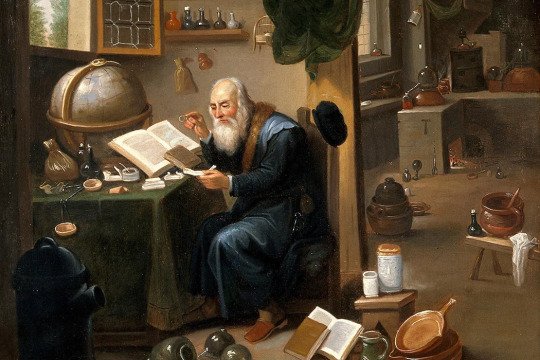
Okay, let me talk about another very common medieval myth that originated with the Rennaissance but is still commonly believed to this day.
Which goes as such:
The medieval church was anti-science. Because of this, they burned people who tried to do science at the stake as heretics.
I talked about how the witch hunts actually happened after the middle ages before. But let me talk about the church and science, because it is actually quite the opposite: Most science that happened during the middle ages was financed by the church.
Now, you can argue that technically speaking they were anti-science in one way: They decided who would get their science financed and most science that happened would be written down in Latin, while the church made an active effort that only few people would learn Latin - because they were after all trying to keep people from learning both certain scientific things and especially actually the contents of the bible.
Something that we have to say, of course, is that a lot of that science happened at the time was connected to alchemy, which of course did not fully follow the scientific method (because the scientific method was only developed later), So, there was a lot of supersticious beliefs put into it, at times even "magic", which then led to wrong conclusion, even if they got a result. But it was still things that happened and often happened in fact in monestaries. A lot of science was done by monks, nuns and other church ajacant people.
And because he gets always depicted as getting excommunicated and what not... Yeah, no, didn't happen. Copernicus was actually held in super high regard at his time.
So, where does this myth come from?
Well, basically as the middle ages ended we had the split of the church into the different dominations and the protestants were rather stern about things. Which then prompted the Catholic church to go hard on "heretics" (see also: witch hunts). It didn't help that at this time a lot of the alchemists actually started looking into the kind of magics present in pagan religions - or to turn away from religious and supernatural doctrine entirely. Paracelsus for example outright talked against the church and was criticising the church. He did not get persecuted for his alchemy, but for him actually speaking out against the church.
23 notes
·
View notes
Text
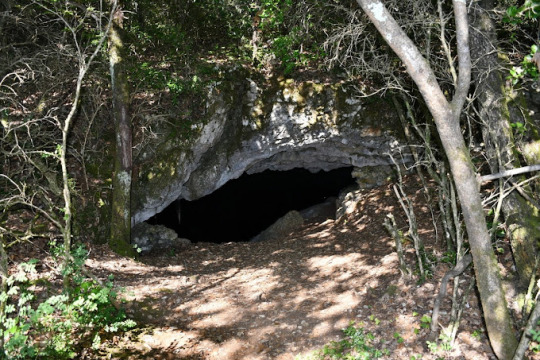
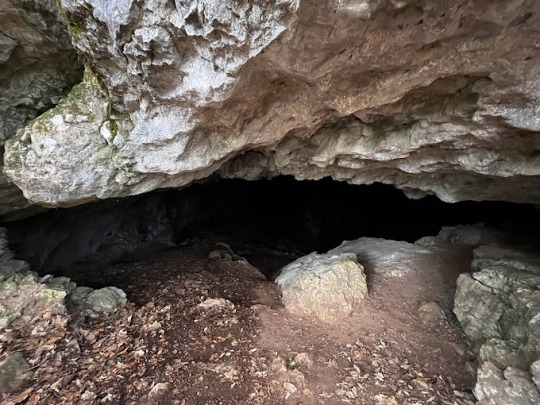


Genuine French Protestant church, post-Revocation of the Edict of Nantes. (Grotte des Camisards, Rochegude, history)
I've personally been in this one, it has some nice acoustics - you just have to be careful not to hit your head going in, the entrance is about 1.5 meters tall but gets bigger the deeper you go. No stained glass windows, but the forest is beautiful! How amazing to see God's glory all around you when you step out. And how gracious is God that He'd come in such lowly places to comfort and uplift His people.
#christianity#protestant churches#catholicism#protestantism#church history#protestants#huguenots#camisards#france
34 notes
·
View notes
Text
Me when I was a fair bit younger, learning about some church history: "omfg why are these people being horrifying to each other over such an incredibly minor bit of doctrine. What gives, guys. None of this is relevant to, like, loving God and treating other people well and all of the other crucial bits."
Me in my mid-40s having witnessed epic fandom ship wars from the sidelines and even people falling out over what sexual or kink role a fictional character might adopt: "OHHHHH. Oh I see. It happens exactly like this."
There is a small part of me when I witness the really unnecessary bits of fandom drama that pipes up with "oop, it's the date of Easter all over again". ;-)
15 notes
·
View notes
Text




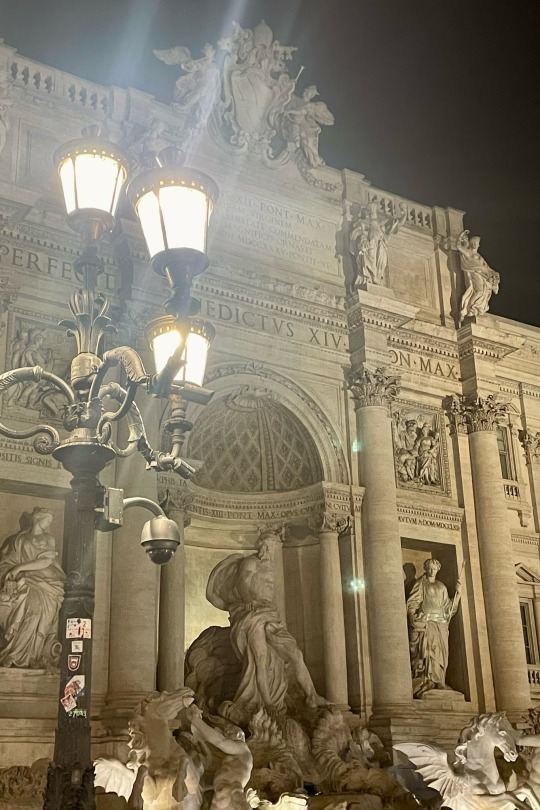
The Pantheon and the Trevi Fountain — Rome, March 2024
#rome#italy#architecture#sculpture#baroque#trevi fountain#basilica of st mary and the martyrs#pantheon#church history#ancient rome#classical studies#classics#art history#photography#my photos
17 notes
·
View notes
Text
Lovely article explaining what an Indulgence actually is. Believe it or not you cannot pay for the forgiveness of sins.
21 notes
·
View notes
Text
No, the Easter Season Isn’t Pagan

One of the most common arguments people make against Christianity is that several essential elements of our faith come from ancient pagan religions. For example, there are many books that contend that the entire story of Jesus is more or less plagiarized from earlier pagan stories, and many argue that our most important holidays, such as Christmas and Easter, are simply recycled pagan festivals.
Since it is the Easter season, you might encounter more of these claims than at other times of the year, so let’s take a look at some of them. In particular, let’s look at three of the most common ways that people try to argue that Easter is really just a recycled pagan holiday, and when we do that, we will see that they are little more than smoke and mirrors.
First, we have the argument based on the etymology of our English word “Easter.” Many people say that it comes from the name of the old Germanic goddess Eostre, which supposedly shows that it is just a recycled version of an ancient pagan festival celebrating her. Now, I don’t know enough about the history of the English language to assess the etymological claim here, but even if it is true, this argument still has a huge, gaping hole: the early Christians didn’t speak English.
In the earliest centuries of the Church, Christians spoke Aramaic, Greek, and Latin, and in those languages (as well as all of the Romance languages I am aware of), the word for “Easter” actually comes from the word for “Passover,” the Jewish feast that falls around this same time (and this is exactly what we should expect, since the death and resurrection of Jesus is our new Passover). To take just one example, the Greek word for “Easter” is pascha, which is the exact same word they use for “Passover.”
This shows that even if our English word “Easter” does come from the name of a pagan goddess, that is not the origin of the holiday itself. Christians were celebrating the resurrection of Jesus long before the advent of the English language, so the name “Easter” came about well after the feast was instituted. Consequently, as the names for the holiday in those older, more relevant languages shows, its origin lies elsewhere. The potential etymological link between our English name for it and the goddess Eostre is simply a linguistic curiosity with no relevance whatsoever to the origin of the holiday or the truth of the resurrection.
Pagan Traditions

Another common argument you will often hear is that many of our favorite Easter traditions come from paganism. For instance, people point out that bunnies and eggs, which have nothing to do with the story of Jesus, come from paganism, so once again, Easter is essentially a pagan holiday. But just like the first argument, the logic here just doesn’t hold up.
This argument confuses the substance of the holiday with the way we celebrate it. Sure, we may have borrowed some customs from paganism and incorporated them into our Easter celebrations, but that doesn’t mean that the holiday itself is essentially a pagan feast or that the resurrection never really happened. This has nothing to do with the origin of the feast itself. It simply means that somewhere along the line, some Christians saw some pagan celebrations that they liked, and they chose to incorporate them into their celebration of an already existing Christian holiday.
Paschal Plagiarism
Finally, we come to the only argument that has any real chance of being more than just smoke and mirrors. Many people claim that the whole idea of Jesus’ resurrection was simply plagiarized from stories about ancient pagan gods and goddesses, so it never really happened. For example, they often point to the stories of Osiris, Adonis, and Attis, who, according to these claims, died and rose just like Jesus. Now, if these claims are true, and if the Christian belief in the resurrection of Jesus is just a cheap knockoff of these pagan stories, then yes, this argument would be very strong, and our faith would be in serious trouble. But is that the case?
Not at all. There are a few problems here. First, even if all of these ancient pagan gods were said to have died and risen, that does not prove anything. The mere fact that there is a similarity here does not mean that there is any causal relationship between them. Instead, there is a much more likely background for the Christian belief in the resurrection of Jesus: the Jewish belief in the resurrection of all the dead.
Already in the time of Jesus, the Jews believed that at the end of what they called “this age” (basically what we would consider normal human history), the dead would rise and get their bodies back (Daniel 12:2; 2 Maccabees 7:9, 11, 14, 23), and the first Christians believed that Jesus’ resurrection was simply the beginning of that general resurrection (1 Corinthians 15:12-23, 1 Thessalonians 4:13-16). Now, since Christianity grew out of Judaism, this is a much more likely background for our belief in Jesus’ resurrection than any pagan stories about dying and rising gods.
Real Parallels?
Moreover, once we start looking a bit more deeply at the alleged pagan parallels to Jesus’ resurrection, the argument becomes even less convincing. These stories are actually not all that similar to the Christian story of Jesus’ resurrection, and the vast majority of them come to us from sources that are later than the rise of Christianity.
For example, the story of the Egyptian god Osiris ends with Osiris becoming the ruler of the underworld, which is very different from a real resurrection. On the other hand, the Greek god Adonis became connected to a resurrection only after the rise of Christianity, so even if his story presents a real parallel to Christian belief, the influence goes in the wrong direction for the argument to work properly. His story was almost certainly influenced by Christianity, not the other way around.
source: https://catholicexchange.com/no-the-easter-season-isnt-pagan/
88 notes
·
View notes
Text
We just learned about the Great Schism in my Church History class and every time it was mentioned in the textbook I put a little sad face next to it.
Like I know it’s been almost a thousand years since the Eastern and Western Church parted ways but breakups hurt. 😩
#such an ugly thing too#what we humans tend to do if given half the chance#at least there is friendly dialogue now#Christianity#church history
20 notes
·
View notes
Text

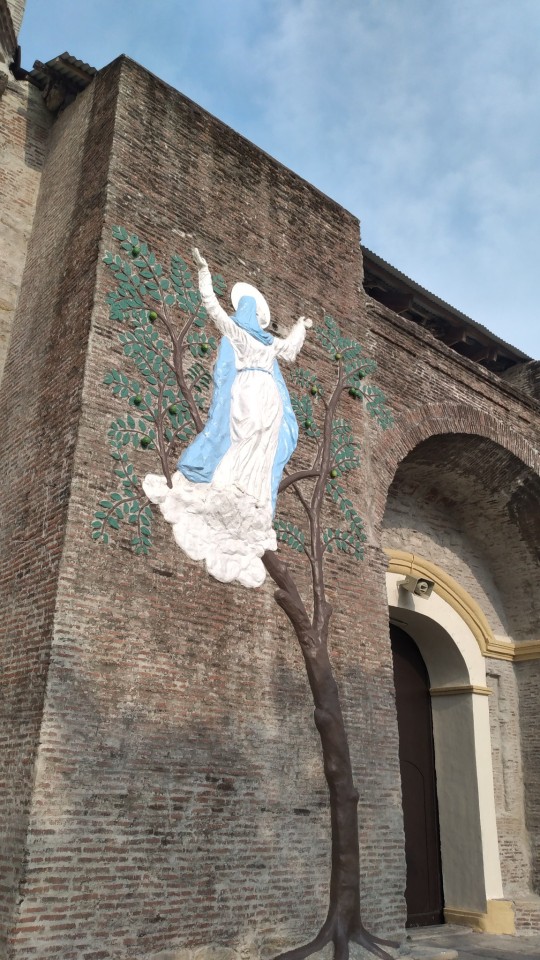
Nuestra Señora de la Asunción, Ilocos Sur, Philippines
#i should post more of my church pics lmao i visited so many last may#philippines#my post#philippine history#church history#catholic history#pilipinas
21 notes
·
View notes